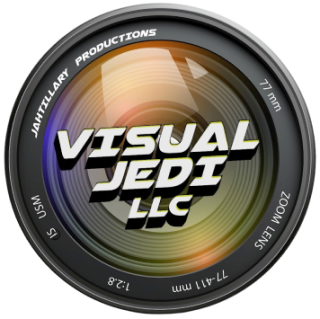“He had initiative, ambition, and drive. He reached out to me after he got his certificate and graduated… He bought a drone, told me about it, and said…I said, ‘Okay, I’ll call you for a commercial if something comes up.’ Something came up and I called him and we did some work together. And he’s still doing some other things with his drone.”
Founder of VISUAL JEDI LLC
Film Connection mentor Sean A Taylor on Training Tomorrow’s Pros
So recent Film Connection graduate Frankie Caruso got hired at Yale’s video department.
“He already knew a lot of what he was doing with editing. He just needed a real handle on Final Cut Pro X, and he was able to do that and get his certificate…It’s kind of a place where you submit an app to go into the video department…He just needed to get his credentials to do it, and that’s what happened with him.”

Well that’s great. You recently hired your former extern (apprentice) Film Connection graduate Clint Sousna for a car dealership commercial. What made you want to hire Clint?
What do you like about mentorship?
“If they really grow professionally and become a Jedi, [which] is what I call it, I can use them to help me work. I’m trying to build another me so we can go out and execute more jobs. So that’s why I teach, to kind of build an army or build a community of people who are professional and understand what’s going on…You just want to get a good crew that knows what they’re doing.”
You’re a big believer in the hands-on method. Why?
“Because you learn by doing in this field. I know other fields you can read books and study and blah, blah, blah, but in the technical field, what I’ve found is… when you actually touch the camera, you get muscle memory. Even with the computer programs, you learn by doing. When I’m teaching the programs, I sit back and have the student use the mouse…I have them do it to develop muscle memory.”
You’ve talked about using different kinds cameras on different shoots. How do you approach shooting music videos?
“For the music video projects, I select the DSLR cameras or one of the small 4K Sony cameras. I also have a broadcast camera…So I would pick one of those cameras first of all for a music video. That’s the first [priority]—the format: the camera, how the video’s going to look, the quality.
Then, we go through lighting scenarios, storyboarding, listening to the song. We do three takes and a cameo, three different takes at three different locations. Then I do a cameo of the artist. Then [during editing] I take all of those layers and go back and forth between them. I treat it like a layer cake. Layer one is just kind of lining up and syncing up all the video. Layer two is kind of chopping it up, and layer three is adding your effects.”
Regarding your time at ESPN, they say in order to work in sports broadcasting you’ve really got to be on your game because oftentimes it all comes down to the second.
“It’s very on the edge. [There are times when] you’ve got the talent showing up one minute before we go on air… and we’re trying to get the lighting on them and we’re trying to mic them up and we’re trying to set the camera focus on them and all of that stuff…
Another thing is just the overall amount of information in these producers. They’re obsessed. They want to bring in the latest information… when something in sports happens, these producers want to mix up the content…So people have got to scramble and rearrange the script, rearrange the teleprompter, rearrange the video that they talk to, within the commercial break, within seconds…
You’re pushing all these buttons and you’re hearing the speaker go to break, three, two, one, and break time. And at the break time we’re doing something called ‘fixes’ where, if we made a mistake on something we will re-voice it and redo it in the commercial break, then cue it back up again and get ready to go back on air again. It’s kind of an adrenaline rush.”
What’s your advice on how Film Connection students can make the most of the program while they’re in it?
“I would say to be a sponge, basically. Observe as much as you can and do as much hands-on as you can. Really, honestly, I would say take this opportunity to gain real-world experience while you can, because the real world is changing, and when these mentors are with you, they’re actually preparing you to take over or assist with the company.
That’s really what my main goal is when I’m with a mentee (extern), just trying to prepare them to eventually sit in my chair so I can walk away. That’s what I told a guy who said, ‘How do I know when I’m ready?’ I said, ‘When you can sit down in my chair and just edit a wedding from beginning to end. You can take out my camera, pop in an SD card, ingest it and edit it and know what you’re doing. And when the glitches happen, you can get over it and actually finish it…That’s how you know you’re ready.
Other than that, you can have as many pieces of paper as you want in your hand that say that you did this and that and helped out halfway with a project, but until you put some muscle into the game, and build your own confidence level and actually do it, none of that matters.”

